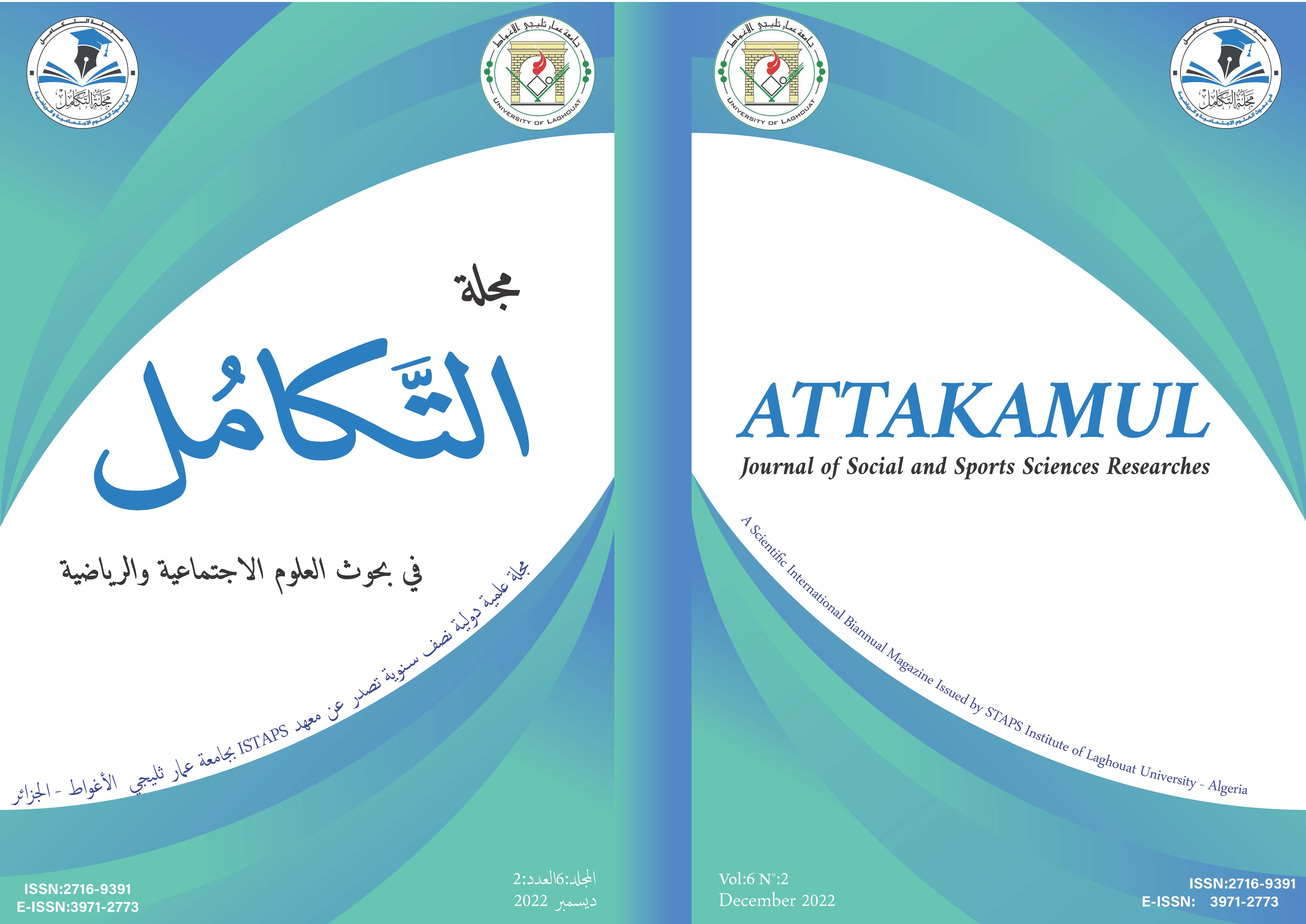The effect of competitive exercises in the way of playing in the development of the most important types of speed and special offensive playing positions for advanced handball players
Abstract
Offensive playing positions play an important role in handball for the purpose of achieving goals in a harmonious way and with high effectiveness, and that the team that enjoys a tactical attack and high tactics makes remarkable progress in the result of the matches, because this offensive method is trained and applied under conditions similar to playing positions by exploiting the correct irregularity Defenders as they return to the defensive lines.
Hence the importance of the research in raising the players' physical level and skill performance for their offensive playing positions, which is reflected in the future on their success during the competition because of its positive impact in achieving victory.
As for the research problem: by observing the researcher and his field experience in training, they found the lack of some coaches on the lack of interest in the applications of special offensive playing positions in their training, especially in the style of the competitive playing method, which is characterized by this method of simulating the requirements of the game recently through training on the rhythm of play and the changing conditions of matches. during defense. When the study aimed: to identify the effect of competitive exercises in the way of playing to develop the ability, types of speed, and the special offensive playing positions of handball for applicants. As for the hypothesis of the research: the competitive exercises had a significant effect on the development of the types of speed and the offensive playing positions of the handball for the applicants.
As for the research method: the researcher used the experimental method in the manner of two equal groups (the control - experimental) with two tests, the pre and post tests. ) For the exploratory experiment, the number of the sample became (16) players, the sample was divided randomly into two equal groups, the first control and the second experimental, with (8) players for each group. The researcher reached: to the most important conclusions, the players of the experimental group outperformed the players of the control group in all types of speed and offensive playing positions for handball.
References
2. جميل قاسم محمد البدري، احمد خميس راضي السوداني. موسوعة كرة اليد العالمية ، بيروت , مؤسسة الصفاء للمطبوعات , 2011 .
3. حاسم عبد الجبار صالح : أثر تمرينات القوة الخاصة بأساليب متنوعة في تطوير بعض أنواع السرعة ومهارات اللاعبين الشباب بكرة اليد, اطروحة دكتوراه – جامعة بابل , 2013.
4. حيدر عبد الواحد جلوب : بعض المتغيرات الفسيولوجية والقابليات البيوحركية المطورة باستخدام تدريبات TRXو Vertimax وعلاقتها بحالات اللعب الهجومية الخاصة بكرة اليد للمتقدمين اطروحة دكتوراه- جامعة بابل ، 2020.
5. ضياء الخياط وعبد الكريم غزال .كرة اليد ، الموصل جامعة الموصل ، دار الكتب ،1988
6. كمال عبد الحميد اسماعيل و محمد صبحي حسانين : رباعية كرة اليد الحديثة , ط2 , القاهرة , مركز الكتاب للنشر , 2019.
7. محمد جاسم الياسري ومروان عبد المجيد : الأساليب الإحصائية في مجالات البحوث التربوية، ط1، مؤسسة الوراق للنشر والتوزيع، 2001.
8. محمد مرسال حمد أرباب وأسامة عبد الرحمن عل ي : تأثير برنامج باستخدام التمرينات الزوجية النوعية على بعض القدرات الحركية الخاصة للمبارزين تحت 14 سنة , مجلة نظريات وتطبيقات ،كلية التربية الرياضية للبنين بأبو قير بالإسكندرية، العدد 53 ,2004.
9. ياسر دبور. كرة اليد الحديثة , الإسكندرية، منشأة المعارف، 1997.
Copyright (c) 2022 https://creativecommons.org/licenses/by-nc/4.0/

This work is licensed under a Creative Commons Attribution-NonCommercial 4.0 International License.








